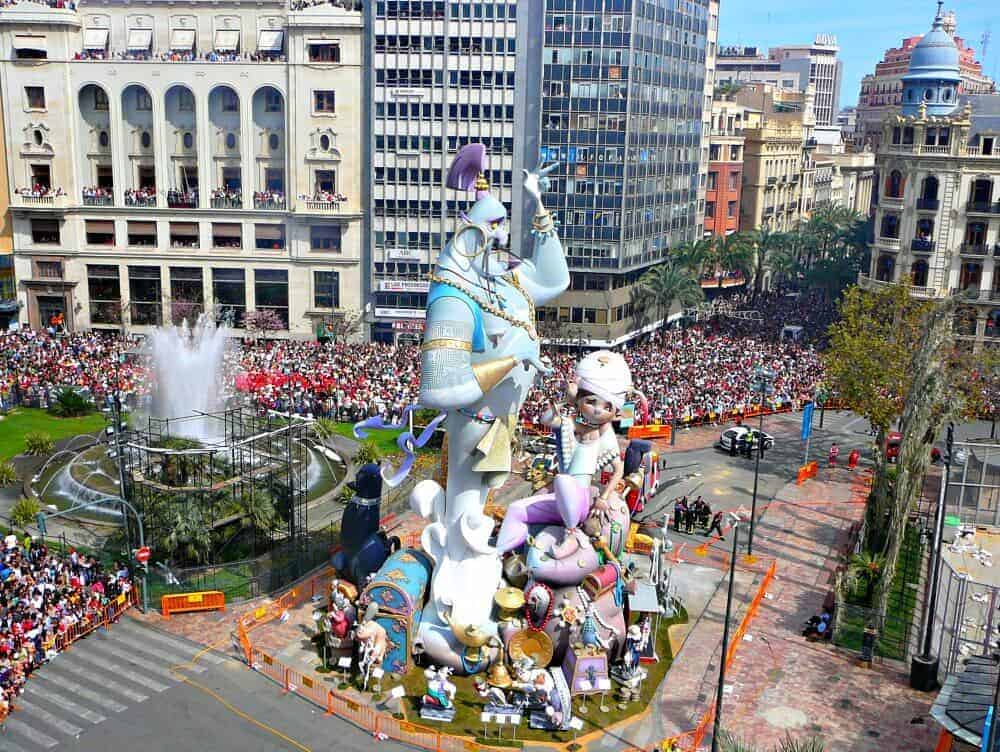
Fabulous Popular Festivals to Attend in Spain (Part One)
Do you love popular festivals? Do you like Spanish folklore? If so, don’t miss the post below where we introduce the best festivals in Spain of all times.
Throughout Spain, festivals and celebrations are a moment of union, solidarity and fun. These celebrations have the peculiarity of being symbols of the culture of Spain and at the same time have served to consolidate the identity of this country before the world. The best part is that no matter if you travel in autumn, winter, summer or spring… your visit will coincide with at least one of these festivities in Spain! Want to know what they are? Read on!
Las Fallas, Valencia
Among the popular Spanish festivals that gather the largest number of people, Las Fallas is in first place. Without a doubt, this is one of the best times to visit Valencia and its essential places. The name of this festival refers to the torches that were placed at the top of the watchtowers and its origin dates back to the eve of St. Joseph’s Day, when bonfires announced the arrival of this festival.
The first reference to this festival is found in 1774, but the documentation begins to be more important from 1848. The Fallas since 2006 has been included in the representative list of intangible cultural heritage of humanity of Unesco, in addition to being listed as a festival in Spain of international tourist interest.
These festivities have a characteristic costume: the falleros must wear the torrentí costume, the saragüell costume, they cannot wear a tie and must wear black socks or labrador sneakers with embroidered socks. In the case of the falleras, they usually dress in Valencian labradora costume, huertana costume with bow tie and eighteenth century costume.
Date of the celebration: from March 15 to 19.
La Tomatina, Buñol

La Tomatina is an annual event held in Buñol, a town in the province of Valencia, in which participants fight by throwing tomatoes at each other. The last Wednesday of August is the date of the celebration. On that day, other events take place such as the Palo Jabón where, if you dare, you will have to climb a pole filled with grease to reach a ham placed at the end.
It is one of the festivals in Spain that has had one of the most curious beginnings, since, according to the official website, it began when a group of young people knocked down one of the participants in the parade of giants and big heads. The assailant was filled with anger and started punching everything in his path… and coincidentally, there was a tomato stand nearby!
Everyone quickly caught the euphoria and started throwing tomatoes at each other. Unbeknownst to them, they had just made history! This battle was repeated the following year on a voluntary basis, and so on. However, there are other legends about the red battle, very different, that also speak of the beginnings of La Tomatina.
In 1957, the tomato was banned, which gave rise to the “tomato funeral”, where the people of Buñol carried around the city a coffin with a tomato inside. The popular pressure was so strong that the event was repeated a few years later!
This festival was declared a Festival of International Tourist Interest in 2002 by the General Secretariat of Tourism. It also brings together visitors from all over the world. Do you want to participate? Don’t forget to crush the tomatoes before throwing them, so that the blow will be softer and no one will get hurt.
Date of the celebration: last Wednesday of August.
April Fair, Seville
What to see in Seville? Of course, the April Fair! It is celebrated two weeks after Easter and has been declared a festival of international tourist interest. Did you know that the founders of the Seville Fair were a Catalan and a Basque in 1846? These people presented a proposal to the city council to request the celebration of an agricultural and livestock fair. It was authorized on March 5, 1847.
The April Fair is a colorful show, with a lot of joy, where the flamenco costume (consecrated in Seville since the 1929 Exhibition) is the main protagonist. Thus, the inaugural moment begins with the “alumbrao nocturno”, the same night is usually eaten the “pescaíto frito” in the “casetas”. It is worth noting that during these festivities, all the streets are named after legendary bullfighters. The April fair ends with a great fireworks display along the Guadalquivir River.
Date of the festival: two weeks after Easter.
Want to uncover more festivals? Come back to check the second part of our article.



